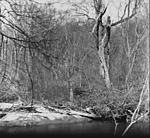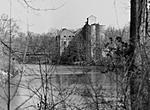---------------------
Here is what I use:
https://www.amazon.com/Maxlaxer-Wate...cx_mr_hp_atf_m
---------------------
Here is what I use:
https://www.amazon.com/Maxlaxer-Wate...cx_mr_hp_atf_m
James, I purchased this red LED rope and agree; they work great with absolutely no fog for Fuji HR-U.
Now if I can only get the scratching under control. Using a Pyrex caserole dish because 6.5 x 8.5 film hangers are rare to non-existent, but even then I get abrasions.
Exploring a way to 3D print these, but it will be a while so I will cut it down to a smaller format for the time being.


Kino
We never have time to do it right, but we always seem to have time to do it again...
If you like sweets go into a supermarket and look for something like this: https://www.profipacking.ro/caserole...t-si-prajituri
You have to find the packaging that is flat. Some are reinforced at the bottom and not in the lid. There you can get the lid. You also should experiment with the transparent and the black version and find out which is softer.
I got one type where the lid is transparent, not reinforced by profiles and of soft material.
You an buy than that and it practically comes free, after you eat the cookies.
First I bought different other foods, but no matter how good I cleaned them, grease did not go completly away. But the sugary residues clean up completly.
Important is, that what will become the bottom of your tray is not reinforced by a profile. Completly flat is best, but hard to find as they have somehow to give strenght to the flims foil these recipients are mad of. If the profile has no hard edges and the material is soft plastic, than it also will not scratch.
I use polystyrene "trays" (the foam type) after i consume the food containedThey are light to use and soft for the X-ray films.
https://www.chemicalsafetyfacts.org/...s/polystyrene/
Down The Rabbit Hole
https://www.youtube.com/channel/UCM7...pITEWXPU3tHGEA
Fuji HR-U 80ISO D-23 1+2 9min
Fuji HR-U 80ISO D-23 1+2 9min
Very nicely done!
I haven't read all 654 pages, so maybe I'm not the first one to try this, but I'm happy to announce my experiments with cutting X-ray film into 35mm and 120 film have been successful!
Fuji sells 36"x14" chest xray sheets the size of my torso, and I realized that 120 rolls of film are only about 32" long... 35mm rolls are longer, but you can get a 20 shot small roll out of 36".
Cutting Method:
(This is under red safelight) I made this guide form from wood and stuff I had lying around. The floating fence in the middle is just resting in the peg holes with bolts, not bolted down. This allows me to slide a gigantic sheet of xray film under it while holding its weight up. I haven't gotten any meaningful scratches yet, but I could but felt on the bottom of that if need be. The raised fence on the far side is glued down in just the right place to make it the width of a film roll versus the one that is aligned with the pegs. It was important to make sure the cutting happens BETWEEN a row of holes, or the blade etc will dip down into the peg holes all the time. I then slide the film sheet under the floating fence, butt it up against the straight one, and either use this cutting tool shown below, or (more accurate but more of a pain), a sharpie and then hold the sheet up to the safelight and cut with scissors. Conveniently, 35mm film is precisely 1" narrower than 120 film, so moving the floating fence over 1 peg switches between the two.
To load and shoot 35mm film: I have cassettes from old commercial 35mm film I shot with 1" of leader still sticking out. I simply tape the xray strip to that on both sides, stick it into a spare camera body with manual rewind, and rewind it up. Then I stick a short section of leader on the front of normal film -- this helps takeup and also wastes minimum xray film on leaders, since the roll is already short. I can then shoot the roll of film in specifically a Canon 10QD SLR, which does not require perforated film (it uses a mechanical roller to keep track of how much film has passed by). AFAIK this and the NIkonos II are the only two modern SLRs to be able to use un-sprocketed film. Xray film seems to suffer from "light piping" or similar and gets bad leaks if loaded in daylight in 35mm specifically. I think the felt traps don't work well with it. 120 film actually works better (See below), but 35mm you should absolutely load and possibly unload it in the dark/safelight.
To load and shoot 120 film: I have old spools and backing paper from commercial rolls I already shot and developed. Before I begin, I roll out a bit of the paper and mark off the starting point of the film in white gel pen. it's roughly like 10 inches in or so, it depends how short you cut the roll and how many shots and your format etc. Sacrifice one roll to plan it all out in the daylight, then from then on you can just roll out a bit, mark the line, and roll it back up. In the darkroom, with safelight, I begin rolling the backing paper onto a new spool. When i get to the gel pen line, I take the cut strip of xray film (which I have hanging from a twine like drying sheet film would be) and add it into the roll and start rolling it up too. When I run out of film, I tape it to the backing paper (this must be the ONLY tape involved!), and then finish rolling the paper, and rubber band the roll off. It leaks like a *****, so i tend to load it in the darkroom. You can do it in daylight, but it's risky. The issue is that the xray film is thicker than normal so it baaaaarely is contained by the reel flanges at the ends, and if you don't wind it super tight, it will leak a bit on some frames. You can also just make do with a shorter roll instead to reduce bulk. The xray film is also stiffer and it will want to spring out and unspool on you. You must be diligent in maintaining pressure until it's loaded properly, then it's fine once in camera. The camera's Ive used have had no problem rolling it tight again on the other side (I have a Minolta Autocord hand cranked, and a Pentax 645 battery motor drive which happily uses this film).
The frame spacing on both 35mm and 120 has been totally fine in my experience, the cameras do not get meaningfully confused by the thicker film base. Occasionally but only maybe once every 10-15 frames and can be cloned out usually if digitized. I have also not seen hardly any scratching of the film on the backing paper or pressure plate side. YMMV.
35mm samples: The last one is out of focus and scratched, but I just wanted to show the crazy halation at 35mm scale you can see sometimes in scenes like this. All of these I think were shot with either a Canon 50mm 1.8 or a Tokina atx-pro 28-70 f/2.8
120 medium format samples:
(see next post for more 120 examples)
Stock is Fuji HR-U Green, rated at 100 ISO, and Development is ideally D-76 1:3, agitate 1 minute straight, then stand 30 minutes. Sometimes though if I'm processing it along with normal film, I use a compromise method to avoid bromide drag on the rolls with sprockets in the same tank, where I do D-76 1:3, 10 minutes, agitate, 10 minutes, agitate, 10 minutes, agitate, 5 minutes, end. it makes the xray contrastier and denser, but acceptable.
Bookmarks